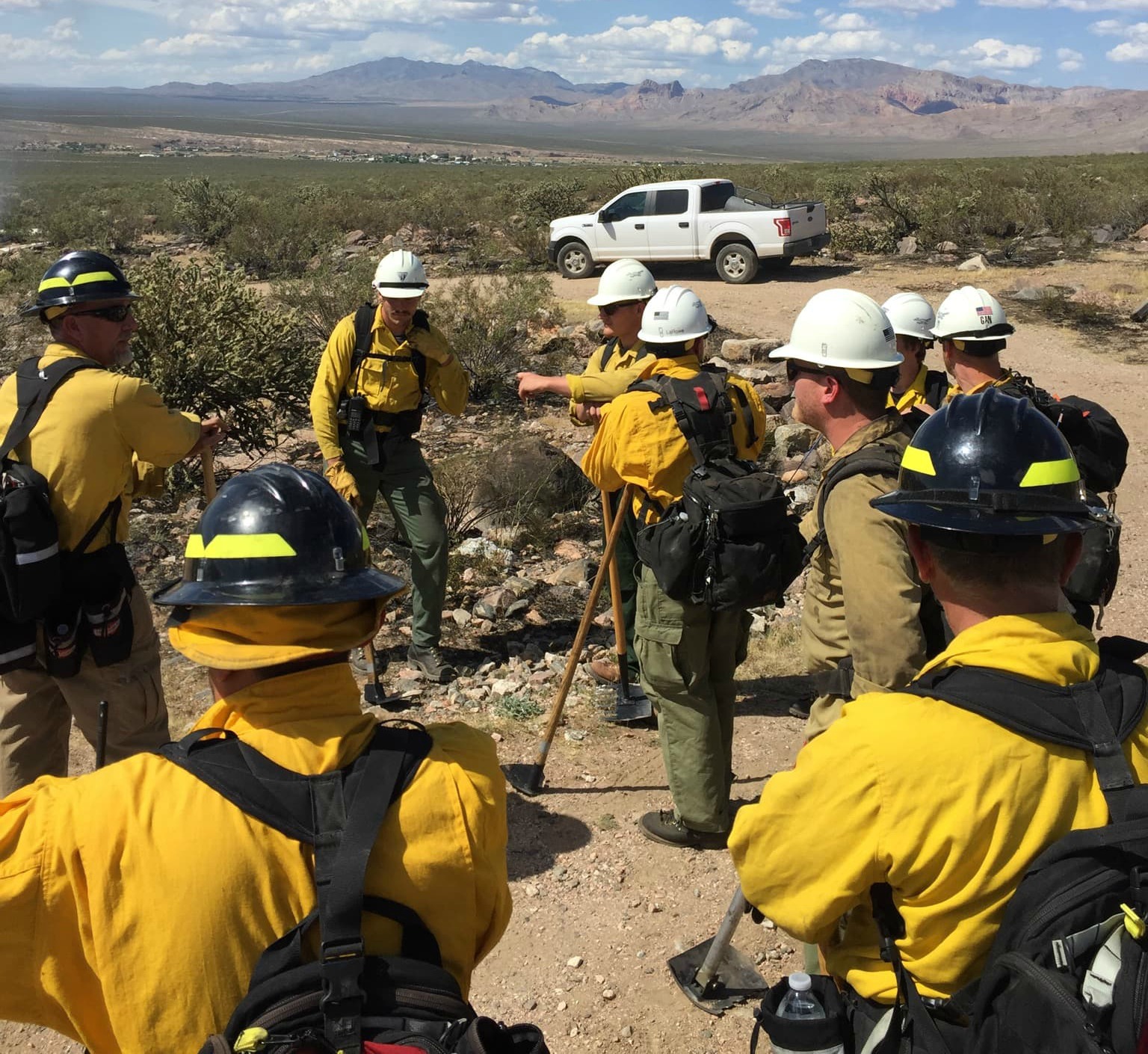
ST. GEORGE — A human-caused wildfire that started Saturday afternoon near Littlefield, Arizona, continues to burn Sunday as crews perform suppression efforts.

The brush fire was reported Saturday near the Desert Springs area shortly after 2 p.m. MDT, and crews arrived to find the blaze had spread to approximately 10 acres, Beaver Dam/Littlefield Fire Chief Jeff Hunt said.
Hunt requested aerial support, and the Bureau of Land Management in Arizona also sent fire crews to fight the blaze, which continued to spread as sporadic winds blew through the area.
Two single-engine air tankers took off from the Mesquite Airport and were dropping fire retardant over the area within 30 minutes of the call. The tankers dropped the retardant at the head of the fire, which prevented it from spreading any farther and allowed crews to continue containment efforts within a 20-acre area that continued to burn.
The fire likely started when a resident was burning yard debris, Hunt said, adding that the homeowner “probably had a dust-devil or a strong wind that whipped through and pushed that fire out.” Once that happened, Hunt said the resident could no longer control the fire on his own.
By Saturday night, crews had completed a fire line around the entire area to contain the fire. They returned Sunday morning to continue suppression efforts, which Hunt said is an ongoing operation with five fire engines and 15 firefighters that have remained at the scene throughout the day.

“We are still trying to get the fire out today if we can, but we continue to find some heat inside the fire right now,” Hunt said Sunday afternoon. “We have to check every single section of the fire and every area that burned to make sure we have this thing is cold out.”
Hunt added that crews are “cold trailing” multiple areas, which is a method of controlling a partially dead fire edge by carefully inspecting every section using their hands to detect any heat. Those hot spots are then dug out, and the live edge is trenched to prevent any reigniting fire from spreading.
The cold-trailing process can take an enormous amount of time when covering a 20-acre area, Hunt said.
Fighting large wildland fires is nothing new for the small department just south of the Utah border, as crews have been deployed all over the U.S. to provide mutual aid whenever it’s needed, Hunt said.
Over the last two years, crews from Beaver Dam/Littlefield Fire District have deployed to assist in California, including last year when the most devastating wildfire season in the Golden State’s history recorded more than 7,500 fires that burned through nearly 1.7 million acres, according to Cal Fire.
Locally, Saturday was a busy day for the district, with crews stretched to the limit on multiple medical calls, vehicle accidents and the brush fire, all coming in within hours of each other.
This report is based on statements from emergency responders and may not contain the full scope of findings.
Email: [email protected]
Twitter: @STGnews
Copyright St. George News, SaintGeorgeUtah.com LLC, 2019, all rights reserved.